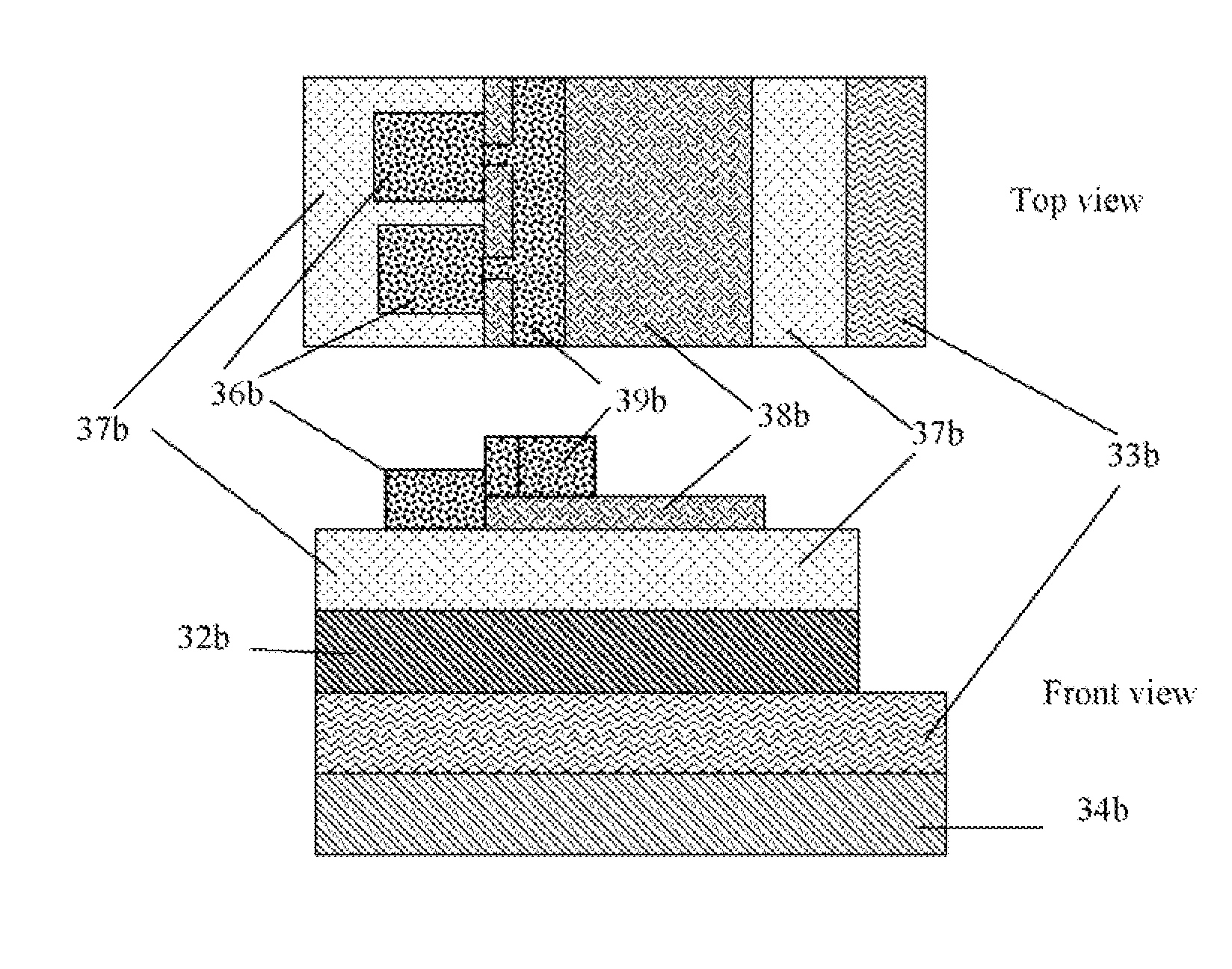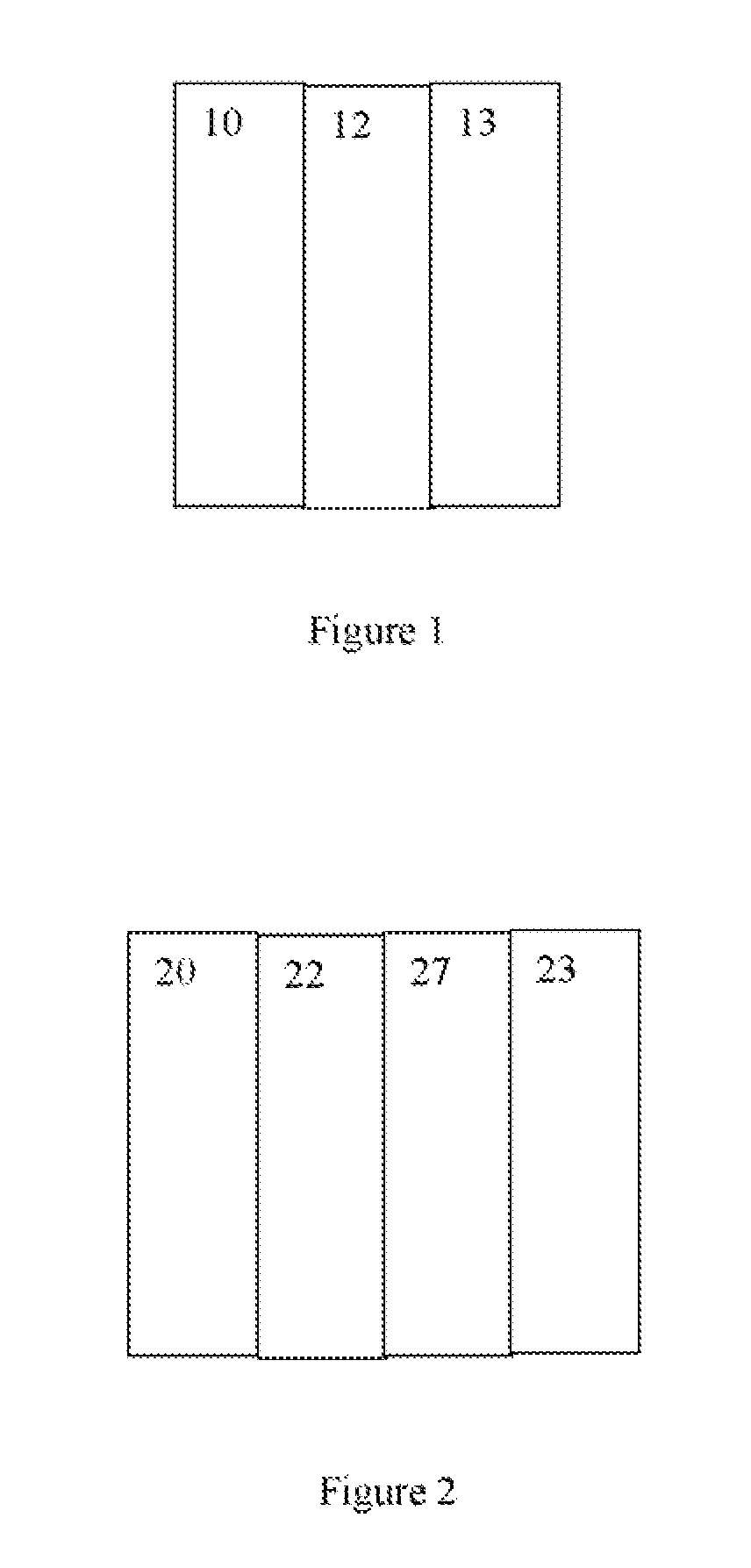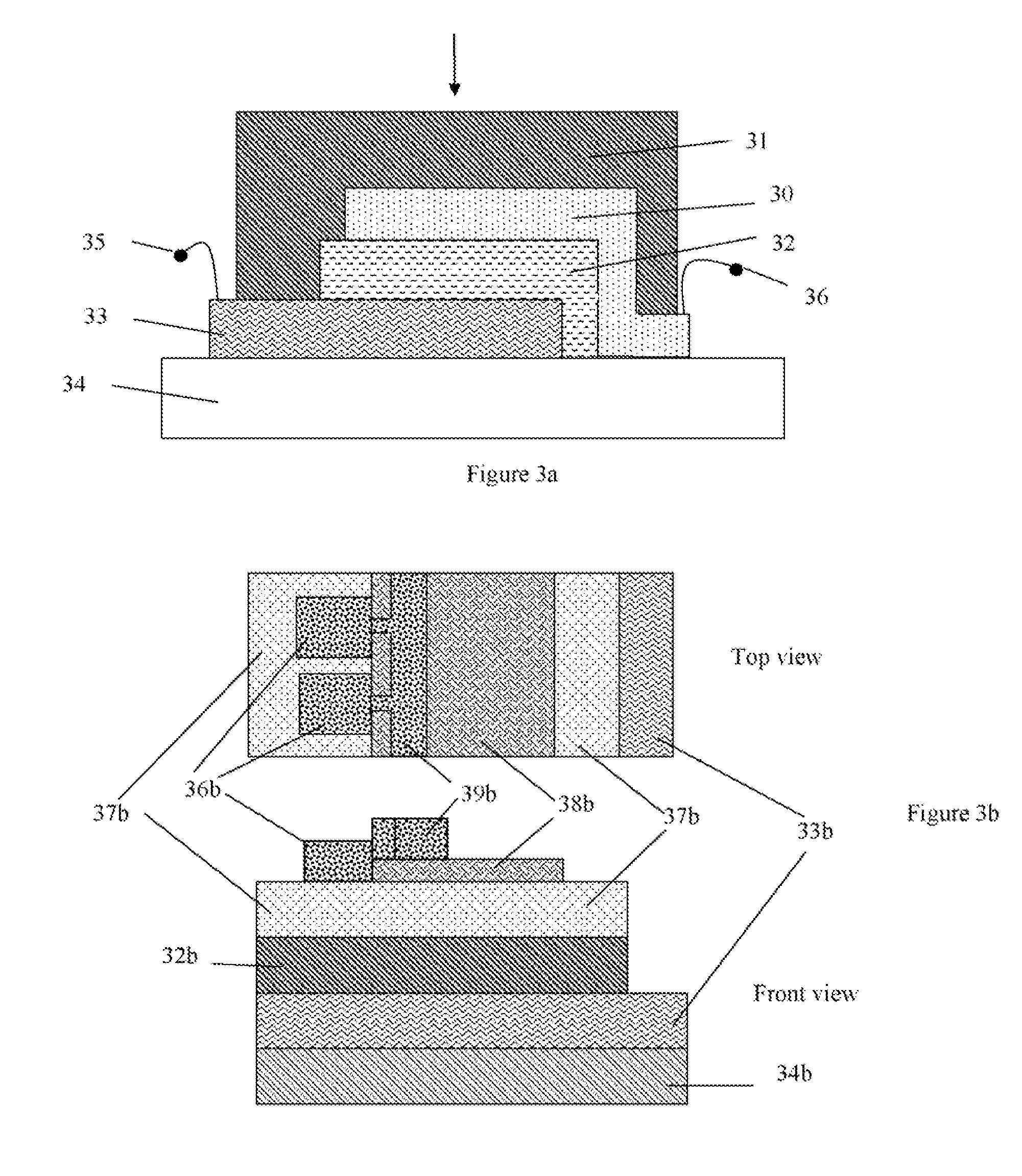Flexible and printable electrooptic devices
a flexible and printable technology, applied in the field of electrochromic materials, can solve the problems of limited power to activate the display, display may require irreversible information to be displayed or have limited cyclability, and the display may require reversible and rapid color changes, etc., and achieve the effect of low cos
- Summary
- Abstract
- Description
- Claims
- Application Information
AI Technical Summary
Benefits of technology
Problems solved by technology
Method used
Image
Examples
example 1
[0107]
TABLE 1Electrolyte formulationMaterialQuantityBMP-NTF1.5mlSOLEF 21216 / 10010.20gSOLEF 11008 / 10010.17gAcetone4mlTiO2 (TiPure DuPont0.4gR960W28)2,2′-Bithiophene0.166gDiethylviologen NTF0.158g
[0108]The electrolyte was prepared by adding the two fluorinated polymers (Solef polymers from Solvay Solexis, Thorofare, N.J.) to a sure seal bottle fitted with stir bar. To this was added the acetone (ACS grade) and the bottle sealed and stirred rapidly at room temperature for approximately two hours until a slightly hazy clear mixture was obtained. The ionic liquid (NTF salt of 1-butyl-3-methyl-pyrrolidium, also called BMP-NTF) addition was then followed by 2-2′bithiophene. The solution was stirred for approximately 30 minutes and then the viologen added. The mixture was stirred for 15 minutes and then the TiO2 added and again stirred for 15 minutes. If the stirring is stopped the TiO2 powder settles to the bottom of the flask and can be redispersed by stirring. Thixotropic additives such ...
example 2
[0110]
TABLE 3Electrolyte formulationMaterialQuantityBMP-NTF1.5mlSOLEF 21216 / 10010.274gSOLEF 11008 / 10010.17gAcetone4.8mlTiO2 (TiPure DuPont0.8gR960W28)3,4 Dimethoxythiophene0.144gDiethylviologen NTF0.155g
[0111]The above electrolyte was prepared using the same ionic liquid as in Example 1. A coating was deposited using a doctor blade in a thickness of about 80 microns (wet thickness) on an ITO coated glass substrate. After drying at room temperature for about 5 minutes it was subjected to vacuum for a similar period for further drying. A gold coated polyester film about 10 microns in thickness (14 ohms / square and visible transmission of 74%) was placed on its back and pressed to form the other electrode. After 2V was applied for 10 seconds followed by shorting of the two electrodes for about a second, the device turned deep blue, and after the color of the viologen faded away, the film that formed was light blue in color.
example 3
[0112]
TABLE 4Electrolyte formulationMaterialQuantityBMP-NTF1.5mlSOLEF 21216 / 10010.444gAcetone4mlTiO2 (TiPure DuPont0.8gR960W28)2,2′-Bithiophene0.166gDiethylviologen NTF0.155g
[0113]The above electrolyte was prepared using the same ionic liquid as in Example 1. A coating was deposited using a doctor blade in a thickness of about 80 microns (wet thickness) on an ITO coated glass substrate. After drying at room temperature for about 5 minutes it was subjected to vacuum for a similar period for further drying. A gold coated polyester (14 ohms / square and visible transmission of 74%) film was placed on its back and pressed to form the other electrode. The thickness of the gold film was ten microns. 2V was applied for 10 seconds and then shorted for a second, the device turned the same color as in example 1, and after the color of the viologen faded away, the film that formed was similar to the one in Example 1 in color.
PUM
| Property | Measurement | Unit |
|---|---|---|
| Volume | aaaaa | aaaaa |
| Volume | aaaaa | aaaaa |
| Volume | aaaaa | aaaaa |
Abstract
Description
Claims
Application Information
 Login to View More
Login to View More - R&D
- Intellectual Property
- Life Sciences
- Materials
- Tech Scout
- Unparalleled Data Quality
- Higher Quality Content
- 60% Fewer Hallucinations
Browse by: Latest US Patents, China's latest patents, Technical Efficacy Thesaurus, Application Domain, Technology Topic, Popular Technical Reports.
© 2025 PatSnap. All rights reserved.Legal|Privacy policy|Modern Slavery Act Transparency Statement|Sitemap|About US| Contact US: help@patsnap.com



